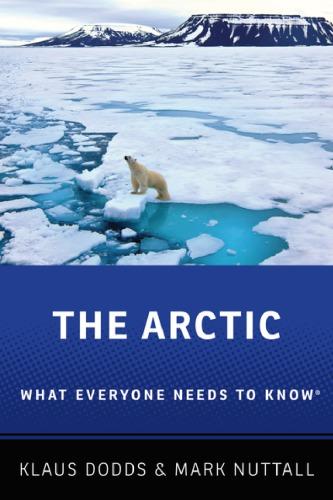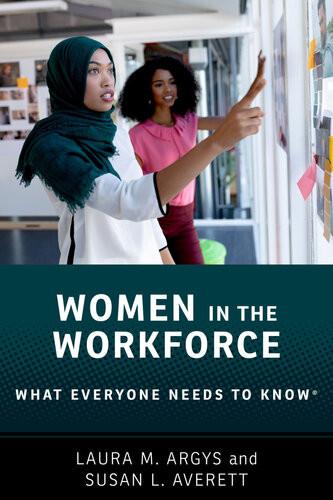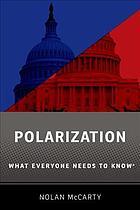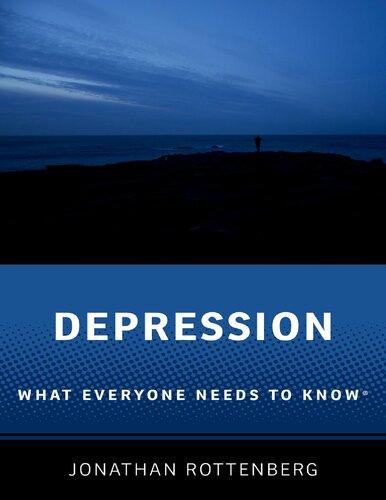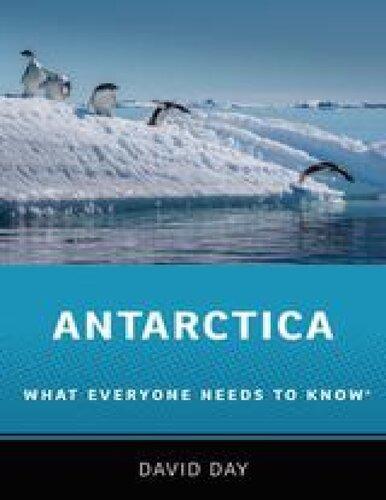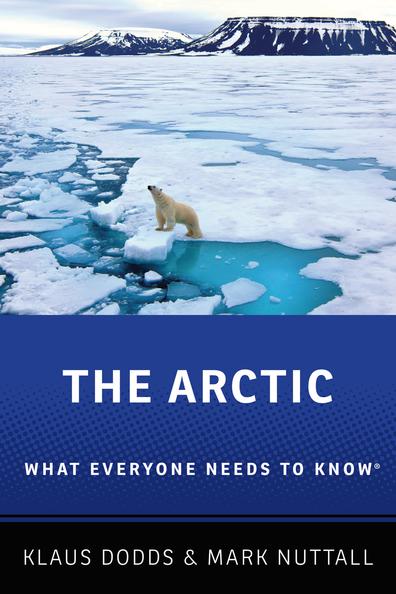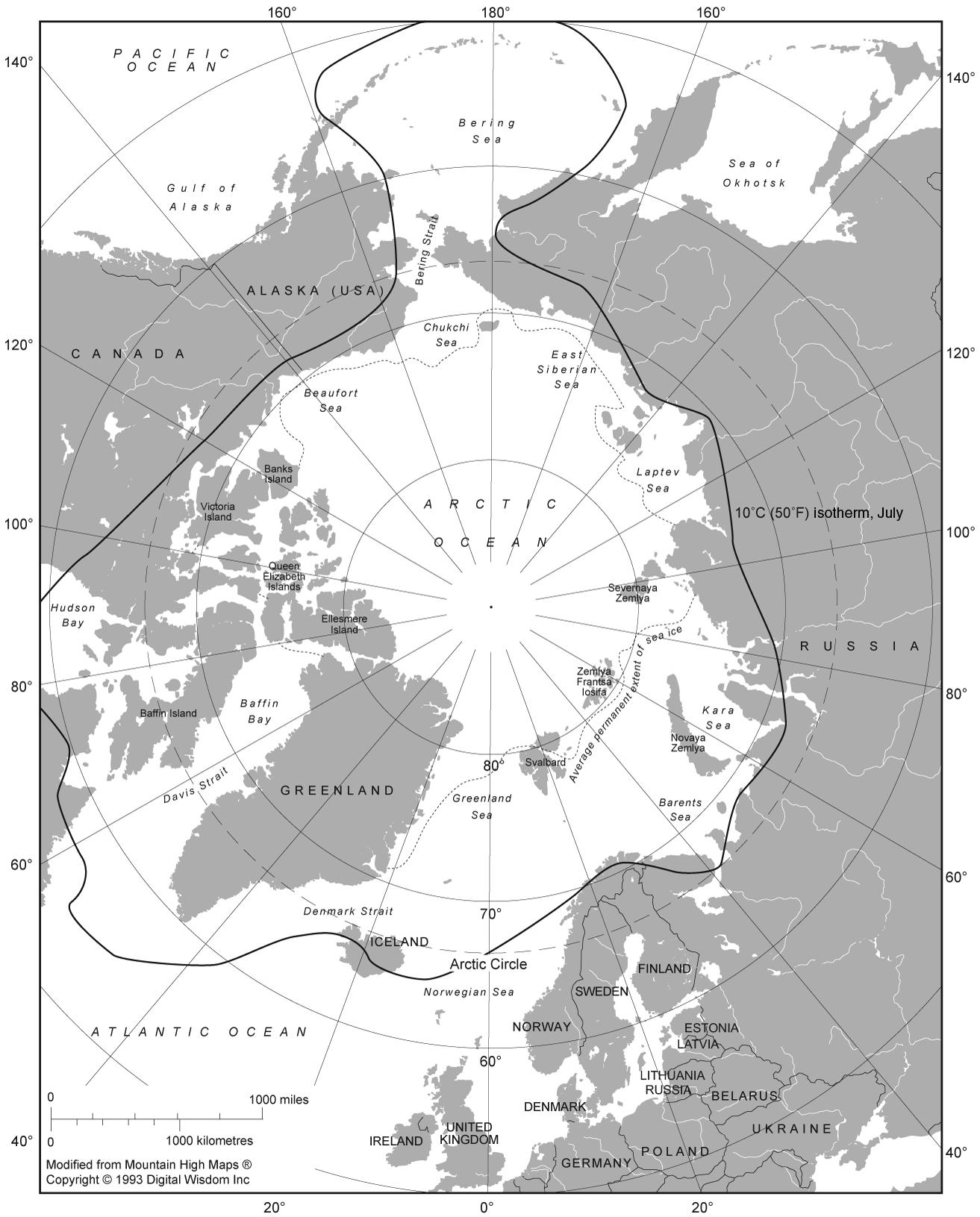FOREWORD
Now when I was a little chap I had a passion for maps. I would look for hours at South America, or Africa, or Australia, and lose myself in all the glories of exploration. At that time there were many blank spaces on the earth, and when I saw one that looked particularly inviting on a map (but they all look that) I would put my finger on it and say, “When I grow up I will go there.” The North Pole was one of these places, I remember. Well, I haven’t been there yet, and shall not try now. The glamour’s off. Other places were scattered about the hemispheres. I have been in some of them, and . . . well, we won’t talk about that. But there was one yet — the biggest, the most blank, so to speak — that I had a hankering after.
Joseph Conrad, The Heart of Darkness
Everything—our culture is based on the cold, the snow, and the ice.
Sheila Watt-Cloutier, “Climate Change Is a Human Rights Issue: An Interview with Sheila Watt-Cloutier,” March 4, 2016
The Arctic occupies a contradictory space in the popular imagination—remote and uninhabitable yet also fantastical and alluring. It is also understood to be under threat from rapid climate change; the future of its peoples, wildlife, and
environments imperiled by a warming trend that is affecting the region twice as fast as the rest of the world. The Arctic is in trouble.
For those who have never visited the Arctic, it is a region of ice and polar bears. Children can and do imagine a magical world where Santa Claus and his reindeer live somewhere near the North Pole. The northern reaches of the world are, of course, replete with fairy tales, sagas, and adventures in volcanic, wind-swept, and ice-filled kingdoms. The dramatic, mysterious, and heroic are the stuff of adult storytelling as well—a litany of explorers, sailors, and aviators have encountered fame, misfortune, and disaster in the Arctic. There is no shortage of candidates: from Sir Hugh Willoughby and his crew, who disappeared on the coast of Russia’s Kola Peninsula in the mid-sixteenth century, to the unknown fate of Henry Hudson in the bay that bears his name in 1611, to Sir John Franklin’s doomed Northwest Passage expedition in the mid-nineteenth century and the disappearance of Roald Amundsen on his way to Spitsbergen in the late 1920s and Gino Watkins in East Greenland in the early 1930s.
But the impact of outsiders on the Arctic has been more than an occasional expeditionary foray. From exploration, trapping, whaling, sealing, and fishing to coal mining, oil and gas exploration, and marine insurance, and scientific research, the footprint of others is various and varied. In Britain, a legion of whalers and traders started their Arctic adventures in cities such as Aberdeen, Bristol, Cambridge, and London. Elizabethan explorers such as Martin Frobisher voyaged to what is now known as the Canadian Arctic in the 1570s, and persuaded the Anglo-Russian Muscovy Company to sponsor exploratory work. Sailing into the bay he named for himself in the southeastern part of Baffin Island (naming other parts of the island after his political and commercial sponsors, e.g., Cape Walsingham after Sir Francis Walsingham), Frobisher hoped to find a northern maritime passage to Asia—in essence, a shorter trade route—as well as assess the potential for gold
discoveries along the way. Material he found on the southern coast of Baffin Island turned out to be iron pyrite—fool’s gold rather than gold—but Frobisher did not arrive home emptyhanded. On their return from a second voyage in 1577, the crew forcibly brought three Inuit with them from Baffin Island. They died shortly after their arrival in England.
The Northwest Passage was thought to be a strait that separated Baffin Island from another stretch of land. However, it remained undiscovered by Frobisher. Later, the Hudson’s Bay Company was active in the area Frobisher had traveled in, setting up a trading post in 1914 and, at the head of Frobisher Bay, the US Air Force established the beginnings of what is now the community of Iqaluit in 1942. At the time, this was the largest air base in the North American Arctic. The runway (which is over 2,700 meters long) serves as an emergency landing site for transatlantic flights and was an alternative NASA landing site for the Space Shuttle. The town of Frobisher Bay was renamed Iqaluit by the community in 1986 (it was formalized the following year), and it became the capital of the newly established Canadian territory of Nunavut in 1999.
The search for the Northwest Passage remained an obsession. Franklin and his men set off in 1845 to navigate through the last unknown section of the passage in the central Canadian Arctic. Their two ships became icebound near Victoria Strait and all 129 crew disappeared. “The lost men’s bodies, waiting, drift and freeze,” wrote the American poet Helen Hunt Jackson in An Arctic Quest. After multiple search expeditions from the mid-nineteenth century onward, Franklin’s two vessels, HMS Erebus and HMS Terror, were finally found in northern Canadian waters in 2014 and 2016 respectively. Inuit knowledge contributed to determining where the wrecks lay on the seabed off King William Island, though previously Inuit oral testimony had been largely ignored. The ships have been designated national Canadian historic sites and are under the jurisdiction of Environment Canada. In October 2017, it was announced that the United Kingdom was gifting the wrecks to
Canada; Parks Canada has hired a number of Inuit guardians to watch over the sites. An extraordinary ending for vessels that were used initially by the Royal Navy as warships, including service in patrolling the Mediterranean, and which were then refitted for Antarctic and Arctic adventures.
In northern British cities, such as Dundee and Hull, the Arctic whaling and fishing trades respectively were pathways to wealth. Orkney was a major recruitment ground for the Hudson’s Bay Company from the early eighteenth century onward. By the late eighteenth century, the Hudson’s Bay Company workforce in Canada was overwhelmingly sourced from the small farms and fishing villages of many of the Orkney islands. The relationship between the company and the archipelago lasted until the early twentieth century.
Connections between the British Isles and the Arctic continued to be reinforced by disaster. The sinking of the British trawler Gaul in mysterious circumstances in February 1974 while fishing in northern Norwegian waters was headline news. Stories abounded that the trawler was a spy vessel and might have been sunk by a Soviet submarine. Fame and fortune in the Arctic were always counterbalanced by disaster and loss.
The vast majority of humanity will never visit the Arctic, although the growth of polar tourism does mean more people are heading north, many of them on cruise ships to the Northwest Passage, to Greenland, Iceland, and Svalbard. They are venturing into areas, though, that are being increasingly affected by human activities. But it is important to remember the Arctic has been a zone of human interaction for centuries, and social and ecological relationships have been profoundly disrupted in the past. For example, colonial powers and commercial expeditions made their presence felt on indigenous peoples and hunted and extracted fish, seals, minerals, and fur pelts. What has changed in the intervening period is the scale and intensity of human and climatological forces.
Climate change and ongoing resource extraction bring different kinds of threats and challenges—in the Arctic we face the ultimate paradox of human existence. How can we learn to live sustainably with our planet? Will Arctic resources be left in the ground and below the subsea floor as part of a global climate change mitigation strategy? There is an urgent need to understand the Arctic and more and more people are responding to this. In some cases, they do this by simply wanting to visit the Arctic and experience what they can of a region punctuated with ice, water, mountains, and extreme weather. Or else they visit in considerable numbers as part of Arctic exhibitions organized by august institutions such as the British Library and National Maritime Museum in London.
The task of this book is to make sure that Arctic fairy tales don’t obscure other stories that can and should be told about this part of the world. The Arctic is in motion.
ONE ARCTIC, MANY ARCTICS
Every week, stories about the Arctic, usually addressing the state of sea ice extent and thickness, diminishing glaciers, rapidly thawing permafrost, acidification of the Arctic Ocean, the resource potential of the region, the opening of new shipping routes, and possible geopolitical tensions, appear in the media. The headlines and accompanying reports are often grounded in the experiences of the five coastal Arctic states—Canada, Norway, Denmark/Greenland, Russia, and the United States— or linger on the Arctic-focused aspirations of countries such as China, India, Singapore, South Korea, and Japan. Asian states are noticeably investing in polar infrastructure, science, and resource-development projects.
As sea ice recedes, there is a widespread suggestion that Arctic countries are determined to secure ever-more territory in the Far North, while non-Arctic states seek greater access to it. The ownership of the continental shelves of the maritime Arctic will determine who has sovereign rights to exploit natural resources. Canada, Denmark/Greenland, and Russia are in pole-position due to their geographical proximity to the North Pole.
Much of this discussion is framed within a context of climate change and the rapid melting of Arctic ice, which, it is often suggested, might then facilitate further commercial extraction of resources, as well as pose a threat to the region’s indigenous cultures and to its wildlife. It provides plenty of raw material for intrigue and speculation. The media is fond of pointing out that there are some big numbers in the mix. The hydrocarbon potential of the Arctic region, according to some assessments and estimates, including those of the US Geological Survey, may amount to 13% of the world’s undiscovered oil and 30% of its undiscovered natural gas.
These stories draw from and simplify the work of Arctic social scientists and natural and physical scientists. They trivialize the geographies of the Arctic, simplify its geopolitics, and are knowingly selective of what may make for eye-catching news—there is more attention on diminishing ice in the Arctic Ocean and starving polar bears, or on ships attempting to transect the Northwest Passage, than on the sensitivity of Finland’s boreal forests to changing temperatures, for example, the decline of Iceland’s fox population, or the health and well-being of the Arctic’s indigenous peoples. Some scientists write popular books with titles that indicate dramatic change and an uncertain future for the Arctic as ecosystems approach tipping points—A Farewell to Ice by noted Cambridge oceanographer and polar scientist Peter Wadhams being one example, while Danish journalist Martin Breum’s recent book Cold Rush is one of the latest additions to a literature concerned with threats to Arctic security and potential conflicts over territory and resources as the region warms. When indigenous peoples are mentioned in these accounts, they are written about as trying to maintain traditions under threat from globalization, global warming, and resource development, or struggling with issues of self-determination.
These are, of course, critical issues. And, true, hunting, fishing, and reindeer herding remain vitally important activities for the livelihoods of many indigenous peoples; but
human life in the Arctic is diverse and increasingly so. The vast majority of Arctic residents live in towns and cities—some of them small, but still predominantly urban in character—and sometimes, on the surface at least, their daily lives are not often dissimilar to their counterparts in more southerly parts of North America, Nordic Europe, and Russia. In Greenland’s capital, Nuuk, a city of 17,000 people, commuters have to contend with an often frustrating morning rush hour on their way to drop their children at school or headed to their jobs in offices, retail, or fish-processing plants; Tromsø in Arctic Norway has a population of almost 72,000 who have access to large shopping malls and the same kind of retail experience one can find in Oslo; and Oulu in northern Finland, with a population of some 200,000, is a hub for research and innovation in technology and has recently branded itself as a smart city. And across the Arctic today, there are many indigenous communities actively involved in extractive industries and engaged in businesses with an international reach.
A point we reinforce in this book is that the Arctic is not disconnected from the rest of the world and has long been affected and shaped by global influences. However, this history is often little understood. There seems to be greater interest in the Arctic than perhaps ever before, and this raises a series of questions, some of which we consider and answer in the following chapters. But where and what is the Arctic? Where does it begin, and where does it end? Attempting to answer this seems a good place to start.
Where does the Arctic begin and end?
Defining places and regions is rarely free from controversy. As we will show in the next chapter, definitions of the Arctic vary and diverge considerably, according to any number of scientific, environmental, geographical, political, and cultural perspectives and biases. And to complicate this further, climate change is contributing to shifting many physical boundaries
that had been drawn as fixed points and zones and marked ecosystems on maps and charts.
The Arctic is also synonymous with the “North” and the “circumpolar North.” We also use these terms, although many high latitude places defined as “northern” in this sense are not necessarily “Arctic.” If anything, we show in this book that the Arctic is a dynamic, complex, diverse, and integral part of the world, a place with rich histories and disagreements about its nature and about its future, rather than an empty, remote, distant, and forbidding region at the top of the globe. It is also a place in motion.
So, an initial answer to our first question is that locating and defining the Arctic is not so straightforward. And like any definition, it can reveal and obscure the multiple ways we divide the world into places and regions. Canadians refer to “the North,” “mid-North,” and the “provincial Norths,” while Norwegians talks about the “High North.” In Russia, they get around that issue by not only identifying a “Far North” but also use the term “areas equivalent to it,” which allows slippage southward depending on the criteria used.
What makes this question a lot harder to answer than it should be is unrelenting change. Once we might have thought the Arctic could and should be defined by lines on maps such as the Arctic Circle. Coupled with that latitudinal definition, we might also point to adjectives like cold, ice, and snow as material, sensory, and elemental markers of the Arctic. We contend that the scale and scope of change scrambles a commonsensical perception and understanding of the Arctic.
In January 2017, it was reported that 2016 had been the warmest year on record for the globe as a whole, and that warming ocean waters off Alaska were bringing widespread ecological changes; that Norway’s Statoil was optimistic its Korpfjell license area in the Barents Sea could contain 10 billion barrels of oil; and that Russian president Vladimir Putin was pushing to strengthen national interests in the Arctic by bolstering Russia’s military presence in its northern regions.
Responding to the news that Russia was investing in more nuclear icebreakers and equipping its Northern Fleet (based near Murmansk on the Kola Peninsula) with ice-capable corvettes carrying cruise missiles, US Defense Secretary James Mattis commented that Moscow was taking “aggressive steps” in the Arctic. It was a news-filled month for an increasingly globally significant region.
A couple of months later, at the end of March 2017, scientists from the National Snow and Ice Data Center (NSIDC) in Boulder, Colorado, published the results of research that suggested a new record for low levels of winter ice in the Arctic Ocean had been set. A number of scientists were quoted in various media as saying the findings were “disturbing” and that the Arctic was now in a “deep hole.”
In April, a paper published in Science reported on research carried out in the eastern Eurasian basin—north of the Laptev and East Siberian Seas—that found that warm Atlantic water is increasingly pushing to the surface and melting floating sea ice. This mixing, the authors said, has not only contributed to thinner ice and to larger areas of previously ice-covered open water, but it is also changing the state of Arctic waters in a process they termed “Atlantification”—and they warned this could soon spread across more of the Arctic Ocean, transforming it fundamentally. Other scientists speak of “Pacification” and report farther movements of warmer and denser waters into the previously frozen ocean. Heat, nutrients, lower latitude species, pollutants, and microplastics are following in their collective wake.
So, in that one year, 2017, we can point to reports of Arctic change on many different fronts—biological, geophysical, and resourceful. Move forward to summer 2018, forest fires raged north of the Arctic Circle in Sweden, and research published by scientists working for NASA, who had constructed a sixtyyear overview of Arctic sea ice thickness beginning in 1958, concluded, since scientists began observing and recording it, that the Arctic Ocean’s ice cover is now younger and thinner.
Meanwhile, in August 2018 it was reported that sea ice off the north coast of Greenland, which is the oldest and thickest in the Arctic Ocean, and compacted by the Transpolar Drift, had started to break up. Scientists from the Danish Meteorological Institute expressed alarm that this ice was becoming more mobile in waters where ice is, on average four meters thick and not easily moved. The following month, Danish shipping company Maersk announced that its container vessel Venta Maersk had completed a trial passage of Russia’s Northern Sea Route (NSR), from Vladivostok to St. Petersburg, while at the end of October Sovcomflot’s oil tanker Lomonosov Prospect, which is powered by liquified natural gas (LNG), voyaged over 2,000 nautical miles in under eight days through the NSR carrying petroleum products from South Korea to northern Europe. Lomonosov Prospect only required nuclear icebreaker assistance in the region of the Ayon ice massif in the East Siberian Sea. These trends, movements, and mobilities are set to continue.
Who lives in the Arctic, and is that changing?
So much of what we are told about the Arctic is partial, out of date, and simply wrong. Many children grow up imagining the Arctic as populated by native peoples (simplified as “Eskimos”) living in igloos. Indigenous cultures are diverse, and many indigenous peoples live below the Arctic Circle. In most parts of the circumpolar North, non-indigenous residents far outnumber indigenous Arctic peoples, largely because of the legacies of colonialism and settlement, but also because of recent trends in immigration, rural-urban migration, and the global processes of demographic change. The communities living in the Arctic are not unchanging. Arctic regions are also cosmopolitan places, with indigenous writers such as Greenland’s Niviaq Korneliussen charting their social, cultural, and sexual—and urban—complexities.
In chapter 3 we will explore the ways in which indigenous peoples think about their Arctic surroundings as homelands and how this is central to land claims, self-determination, and self-government. In some parts of the Arctic, however, everyone is a migrant, an incomer, or a settler who nurtures their own relationships and senses of place with their surroundings— and the composition of Arctic towns and communities is far more diversified than many people imagine. In Longyearbyen, the administrative center of Svalbard (Norway’s Arctic Ocean archipelago, which has a population of around 2,600), a Thai community has grown there since the early 1980s. Working mainly in the hotel sector, Thais make up the second-biggest community, after Norwegians, but the town’s international character is also defined by many other foreign long-term and seasonal residents. Longyearbyen may have its origins in a settlement established by the Boston-based Arctic Coal Company in 1906, but now you are far more likely to meet people working there who are from Malaysia, Armenia, and Argentina, and see Asian tourists rather than coal miners. Longyearbyen is also a busy place throughout the year, not just when a large number of cruise ships visit during summer—international students study changing Arctic ecosystems at UNIS, the University Centre in Svalbard, while the town is host to a number of festivals, even during the coldest winter months. Svalbard has been branded the “the cultural capital of the High Arctic” by the archipelago’s official tourist board. Longyearbyen plays host to the world’s most northerly Oktoberfest, the annual Polarjazz festival at the end of each January, and the annual Dark Season Blues festival, among many others.
In Greenland, people from Thailand and the Philippines work in low-wage service sectors, especially in hotels, restaurants, and housekeeping, but they also run their own successful businesses. Many have families—some have married Greenlanders and Danes—and their children learn Greenlandic and Danish in school; an earlier generation born in Greenland, and now in their early twenties, are making
their own careers and homes in places such as Nuuk and Ilulissat. One of the newer restaurants to have opened in Nuuk specializes in Greenlandic-Filipino fusion cuisine. Tourists arriving at Ilulissat airport will be greeted in the baggage claim area by a sign advertising a Chinese and Thai fast food café, alongside an advertisement for muskox trophy-hunting adventures. In Alaska, Filipinos have been working and living on Kodiak Island for more than 150 years, mainly employed in the fishing and salmon-canning industries. Over 30% of the community is Filipino or Filipino-American by heritage. Many other ethnic communities live in Alaska—for example, there are around 11,500 Mexicans in Anchorage (a city of just over 298,000 people), many of whom retain their links with Mexico and spend time there and in Alaska, while a VietnameseAmerican community has grown since the 1970s and 1980s in Nome, a town of some 3,800 people on the Seward Peninsula on Alaska’s Norton Sound, an inlet of the Bering Sea.
A traveler arriving at Iqaluit’s airport would very likely take a cab to their hotel driven by a migrant to Canada from Syria or Somalia, just as they would from airports in Montreal, Toronto, or Edmonton. Nunavut’s capital is home to around one hundred Muslims, who work as doctors, engineers, and government officials, as well as in service industries; and the Islamic Society of Nunavut opened a building in February 2016 that acts as a mosque and community space. The most northerly mosque in Canada opened in Inuvik, in the Mackenzie Delta region of the Northwest Territories (NWT) in November 2010. In the Russian North and in Siberia the mix of ethnic groups is similarly cosmopolitan—the city of Yakutsk in the Sakha Republic, for instance, is home to Yakuts, Russians, Ukrainians, and Tatars, as well as to people from a number of Siberian indigenous groups, including Yukaghir, Dolgans, Evens, Evenks, and Chukchis. Non-indigenous settlers from other parts of the Russian Federation also make their homes in many other parts of the Russian North and Russian Far East.
So, the Arctic is made up of a series of multiethnic and multicultural homelands—and as we shall see later in this book, there is diversity within indigenous populations themselves. And those homelands are changing and changeable. Asian, European, and American communities are integral to Arctic economies and societies and have been for decades if not centuries.
What effect is climate change having on those who live in the Arctic?
Climate change dominates contemporary discussion of the Arctic. Warming brings with it profound consequences for people, animals, and ecosystems. The impact of warming is uneven; the loss of sea ice and the thawing of permafrost mean risks and vulnerabilities, but also allow opportunities and possibilities.
For some involved in extractive industries, further resource development in the Arctic is thought of as being made easier by climate change, as remote places become more accessible. It is assumed by many that as the frozen Arctic Ocean becomes less so, it becomes more navigable to shipping. For others, the loss of sea ice is disastrous because it affects a way of life dependent on moving across that very substance that is melting and less secure. Canadian Inuit activist Sheila Watt-Cloutier, a former international chair of the Inuit Circumpolar Council (ICC), an indigenous peoples’ organization that represents Inuit throughout the Arctic, wrote in her memoir, The Right to Be Cold which was published in 2015, that a warming Arctic poses an existential threat to a people and a culture predicated on a semipermanent state of cold, snow, and ice. For her and others, the presence of snow and ice is necessary for the survival of Inuit culture and livelihoods. A melting Arctic means indigenous homelands are in danger of being changed dramatically. Thinning sea ice makes travel and hunting more precarious. Travel is more expensive if one is using more fuel to battle through ice-clogged waters in boats during winter and
spring instead of moving across the frozen surface of the sea by snowmobile or dogsled. Traditional indigenous knowledge becomes less reliable than it once was, making it difficult to anticipate what lies ahead on a journey, and this in turn means there is increased potential for stranding, accidents, and even drowning while out hunting. Sea ice is akin to critical infrastructure to Inuit.
Russian leaders might take a more benign view about the loss of sea ice in the Arctic. A northern port such as Sabetta, on the Yamal Peninsula, could develop as a major hub for shipping oil and LNG through the NSR. The Yamal Peninsula is a breathtaking prospect for Russia with total reserves and resources in the fields estimated to be 26.5 trillion cubic meters of gas, 1.6 billion tons of gas condensate, and 300 million tons of oil. President Putin and his government detect economic opportunities in a changing Arctic, which may enhance prospects for the country’s future as an Arctic energy superpower. Russians do worry about environmental change in the Arctic, but they also recognize that there is too much resource potential in the north of their country to ignore. Less sea ice means that LNG shipping could be easier to operate.
If Putin senses opportunities to develop the Russian North further (and one must remember that it was industrialized heavily during the Stalin era), elsewhere other senior politicians, such as Donald Tusk, president of the European Council, and former UN Secretary-General Ban Ki-moon, have been warning of the dangers of unrelenting environmental change. These warnings have often been made during visits to Greenland’s Ilulissat Icefjord, a UNESCO World Heritage Site in Disko Bay, which has become an iconic place for world leaders to travel to and ponder the situation we find ourselves in. Standing as close as they can manage to the edge of the glacial ice of Sermeq Kujalleq (also known as the Jakobshavn Glacier) or moving on tourist boats through iceberg-studded waters, distinguished visitors to the icefjord appear to express astonishment at how climate change is happening before their
eyes as icebergs calve and collapse from the glacier’s front. Calving is sometimes termed “ice ablation or ice disruption” by glaciologists and occurs when a glacier expands and produces icebergs of varying shapes and sizes. This happens when a glacier front moves closer to warmer waters. While it is not caused by climate change per se, more dramatic calving events occurring in the Arctic—especially in Greenland—are entirely consistent with it. Sermeq Kujalleq is the fastest-moving glacier in the world and produces around 10% of all the icebergs in Greenland’s waters. In the last decade or so, it has doubled its speed (moving some forty meters or around 130 feet every twenty-four hours), and its front has receded significantly.
Ice that cracks, tumbles, and crashes into the sea acts as a visceral expression of rising temperatures and a melting world. But environmental change also generates enticing opportunities for communities and businesses in the Arctic to benefit and profit from an expansion of the tourist, mining, and commercial sectors. So, determining and understanding the effects of climate change on those who live in the Arctic is not straightforward. Some communities will face an existential threat to their ways of life, while others will seek to capitalize on opportunities. Disappearing ice may mean indigenous Inuit hunters face difficulties with travel by boat and dogsled, but it allows other visitors access. Tourism in the Arctic is a growing industry—every time senior political figures visit Greenland to express concern about the state of the island’s ice sheet or glaciers, they help promote it as an alluring lastchance tourist destination. Ice is marketed as disappearing, and tour operators appeal to people to visit and experience the Arctic before it is too late.
What are the competing visions of and for the Arctic?
Political leaders, north and south, are not alone in mobilizing their agendas for the Arctic. Change, however dramatic, even disastrous, creates opportunities. Environmental organizations
